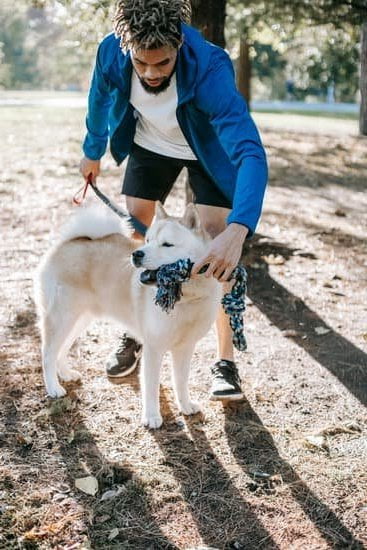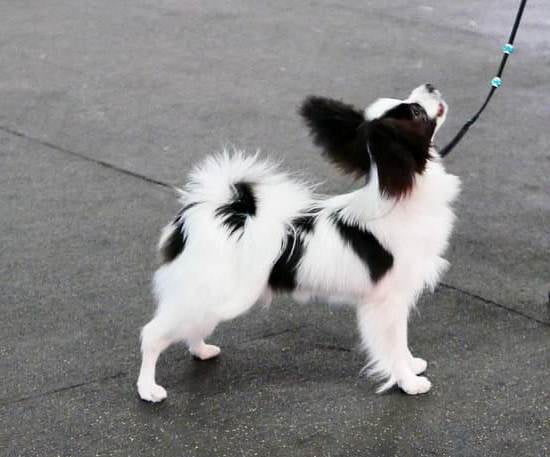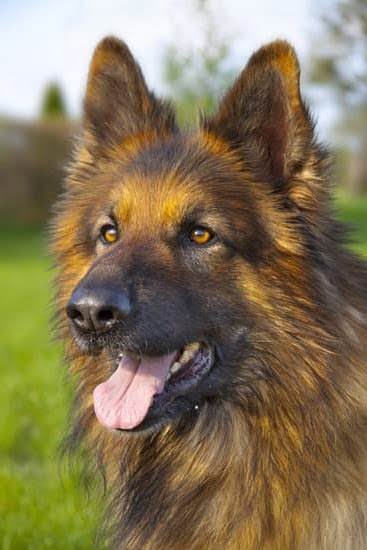Are you struggling with a dog that seems to be in a constant state of excitement? If so, you may be wondering how to train an over-excited dog. Understanding the behavior of an over-excited dog is the first step in effectively addressing this issue. It’s important to recognize that while some level of excitement is normal, persistent over-excitement can lead to behavioral problems and make daily life challenging for both you and your furry friend.
Identifying triggers and causes of excitement in dogs is crucial when it comes to training an over-excited dog. Is it the sight of a leash, the sound of a doorbell, or the presence of other dogs that sends your pet into a frenzy? By pinpointing what triggers your dog’s excitement, you can start to develop strategies for managing and reducing it.
It’s worth noting that regular exercise and mental stimulation play a significant role in curbing excessive excitement in dogs. When they’re not getting enough physical activity or mental enrichment, dogs are more likely to become hyperactive and overly excited. In the next section, we’ll discuss the importance of exercise and mental stimulation for over-excited dogs, as well as provide practical tips on how to incorporate these into your training routine.
Identifying Triggers and Causes of Excitement in Dogs
Common Triggers of Over-Excitement
One of the first steps in training an over-excited dog is to identify the triggers that cause their excessive excitement. Common triggers for over-excitement in dogs can include greetings from unfamiliar people or other animals, the anticipation of playtime or walks, loud noises, and changes in routine. By understanding what causes your dog to become overly excited, you can begin to address each trigger individually during the training process.
Body Language and Signs of Over-Excitement
In addition to identifying specific triggers, it’s important for dog owners to recognize the physical and behavioral signs of over-excitement in their pets. These signs can include rapid panting, jumping, whining or barking excessively, inability to focus on commands, and overall hyperactivity. By being able to recognize these signs early on, dog owners can proactively defuse potentially over-exciting situations and implement techniques to help their dogs remain calm and relaxed.
Root Causes of Over-Excitement
It’s also crucial for dog owners to understand the underlying reasons behind their pet’s over-excitement. While some dogs may simply have a naturally high energy level, others may become overly excited as a result of anxiety, lack of mental stimulation, or insufficient exercise. By addressing these root causes, such as providing ample opportunities for physical activity and mental enrichment, dog owners can work towards gradually reducing their pet’s tendency towards over-excitement.
Importance of Exercise and Mental Stimulation for Over-Excited Dogs
An over-excited dog can often benefit from increased exercise and mental stimulation to help manage their energy levels and encourage a sense of calmness. Here are some key points to consider when it comes to the importance of exercise and mental stimulation for over-excited dogs:
- Regular exercise is crucial for managing the excess energy that contributes to an over-excited state in dogs. Daily walks, playtime, and engaging activities can help burn off this energy and promote physical well-being.
- Mental stimulation, such as puzzle toys, training exercises, and interactive games, is equally important for over-excited dogs. These activities can provide mental challenges and prevent boredom, which can often lead to excessive excitement and undesirable behaviors.
In addition to physical exercise and mental stimulation, incorporating structured routines into a dog’s daily schedule can also contribute to managing over-excitement. Providing a consistent schedule for meals, walks, playtime, and rest can help regulate a dog’s energy levels and promote a greater sense of predictability.
Lastly, it’s essential for dog owners to assess the specific needs of their individual dogs when it comes to exercise and mental stimulation. Some breeds may require more physical activity than others, while certain dogs may thrive with specific types of mental challenges. Understanding these individual requirements can help tailor an effective plan for managing over-excitement in dogs.
Techniques for Teaching Calmness and Relaxation to Over-Excited Dogs
Over-excited dogs can often be challenging to handle, causing stress and frustration for both the dog and its owner. Teaching calmness and relaxation to an over-excited dog is crucial in helping them manage their behavior. There are several techniques that can be used to achieve this goal:
1. **Behavioral Training:** One effective technique for teaching calmness to over-excited dogs is through behavioral training. This involves using positive reinforcement to reward your dog for displaying calm and relaxed behavior. For example, when the dog is able to stay calm during a trigger situation, such as doorbell ringing or visitors arriving, be sure to reward them with treats or praise.
2. **Desensitization:** Desensitization involves gradually exposing the over-excited dog to their triggers in a controlled manner. By slowly introducing the trigger in a way that does not elicit an overly excited response, the dog can learn to remain calm in these situations.
3. **Relaxation Exercises:** Another technique is teaching relaxation exercises such as “down-stays” and “place training”. This involves teaching the dog to go to a specific location and remain there until given a release command. These exercises help distract the dog from their triggers and encourage them to relax.
By utilizing these techniques and being consistent with training, it is possible for owners of over-excited dogs to see improvement in their pet’s behavior over time. Remember that every dog is unique, so it may take some trial and error to determine which techniques work best for your furry friend.
Utilizing Positive Reinforcement to Train Over-Excited Dogs
Understanding Positive Reinforcement
Positive reinforcement involves rewarding desired behaviors to increase the likelihood of those behaviors being repeated in the future. This method focuses on praising, treating, or rewarding a dog when they exhibit calm and relaxed behavior. It is important to understand that positive reinforcement does not involve punishing or scolding the dog for unwanted behavior, but rather encouraging and reinforcing the behavior you want to see.
Applying Positive Reinforcement to Over-Excited Dogs
When training an over-excited dog, it is essential to use positive reinforcement techniques consistently. For example, when your dog remains calm during a trigger situation, such as meeting new people or other dogs, be sure to reward them with treats, verbal praise, or petting. By doing so, you are reinforcing the calm behavior and helping your dog associate being relaxed with receiving rewards.
Training Exercises for Positive Reinforcement
There are various exercises that can be incorporated into training sessions using positive reinforcement. These may include practicing basic obedience commands like “sit” or “stay” in distracting environments, engaging in structured playtime with interactive toys to channel your dog’s energy positively, and using clicker training to mark and reinforce moments of calmness. Consistency in applying positive reinforcement techniques will help your over-excited dog learn to remain calm in different situations.
Establishing Boundaries and Rules to Manage Over Excitement in Dogs
When it comes to managing over excitement in dogs, establishing boundaries and rules is crucial. Dogs thrive when they understand what is expected of them and what behaviors are off-limits. Setting clear boundaries helps them feel secure and reduces their anxiety, which in turn can help minimize their over-excited behavior. It’s important to remember that consistency is key when enforcing these boundaries, as mixed messages can confuse your dog.
One effective way to establish boundaries is through basic obedience training. Teaching commands such as “sit,” “stay,” and “leave it” can help your over-excited dog learn self-control and discipline. Consistently reinforcing these commands in different situations will help them understand what is expected of them, even when they are feeling overwhelmed with excitement.
In addition to obedience training, setting rules around greetings and playtime can also help manage your dog’s over-excitement. For example, teaching your dog to greet people calmly without jumping or barking can be achieved by consistently reinforcing calm behavior and ignoring excited behavior. The same goes for playtime with other dogs – setting rules for appropriate play behavior can help minimize over-excitement during social interactions.
| Importance of Establishing Boundaries | Techniques for Setting Boundaries |
|---|---|
| Establishing boundaries reduces anxiety in dogs | Basic obedience training |
| Consistency is key for enforcing boundaries | Rules for greetings and playtime |
Seeking Professional Help and Training for Persistent Over-Excitement
Professional help may be particularly necessary when dealing with persistent over-excitement that poses a risk to the dog or others. A trained expert can assess the severity of the behavior and implement strategies that are safe and effective, taking into consideration the dog’s overall well-being. Additionally, they can offer guidance on how to communicate better with the dog, establish clear boundaries, and reduce triggers that lead to over-excitement.
In some cases, professional help may involve medication as part of a comprehensive treatment plan for severe cases of over-excitement in dogs. It is important for pet owners to consult a veterinarian about medication options and potential side effects, as well as seek guidance from a qualified behaviorist or trainer experienced in working with over-excited dogs.
| Professional Help Benefits | Responsibilities |
|---|---|
| Customized training plans | Evaluate risks associated with behavior |
| Tailored advice and techniques | Provide guidance on communication |
| Assessment of severity & potential medication | Medication consultation & side effects awareness |
Addressing Over Excitement in Specific Situations, Such as Greetings or Playtime With Other Dogs
Dealing with an over-excited dog can be challenging, especially in specific situations such as greetings or playtime with other dogs. When a dog becomes overly excited, it can lead to undesirable behaviors such as jumping, barking, and even aggression. It is important to address this behavior in these specific situations to ensure the safety and well-being of your dog as well as others.
One technique for addressing over excitement during greetings or playtime with other dogs is to provide your dog with proper socialization and training. Exposing your dog to different environments, people, and other dogs from an early age can help them feel more comfortable and less overwhelmed in such situations. Training them to follow commands such as “sit” or “stay” can also help them remain calm and composed when interacting with other dogs.
In addition to socialization and training, it is important to set clear boundaries for your dog during greetings or playtime. This includes teaching them appropriate greeting behaviors, such as not jumping on people or other dogs, and avoiding rough play that may escalate their excitement levels. Consistency in enforcing these boundaries is key to helping your dog understand what is expected of them in these specific situations.
Tips for Maintaining Consistency and Patience While Training an Over-Excited Dog
In conclusion, training an over-excited dog requires understanding the underlying behavior and triggers that cause excitement. Identifying these triggers is essential for developing a training plan that targets the specific needs of the dog. It is important to provide regular exercise and mental stimulation to help channel the dog’s energy in a positive way, reducing over-excitement.
Utilizing positive reinforcement techniques and establishing clear boundaries are effective methods for teaching calmness and relaxation to over-excited dogs. Consistency and patience are key when implementing these training methods, as it may take time for the dog to learn new behaviors and responses to their triggers. It is also crucial to seek professional help if the over-excitement persists, as a trained professional can provide personalized guidance and support.
Addressing over excitement in specific situations, such as greetings or playtime with other dogs, requires special attention and consistent training efforts. With dedication and perseverance, it is possible to manage and improve the behavior of an over-excited dog. By following these tips and staying patient throughout the training process, owners can help their dogs achieve a calmer and more balanced state of mind.
Frequently Asked Questions
How Do You Discipline an Overly Excited Dog?
Disciplining an overly excited dog requires consistent training and positive reinforcement. By teaching the dog basic commands such as “sit” or “stay,” you can redirect their energy and enthusiasm into more controlled behavior. It’s important to avoid using punishment or aggression, as this can escalate their excitement rather than calm them down.
How Do You Calm an Overactive Dog?
To calm an overactive dog, it’s essential to provide plenty of physical exercise and mental stimulation. Playing games like fetch or going for a long walk can help burn off excess energy and bring about a sense of calm. Additionally, creating a peaceful environment with soothing music or calming scents like lavender can help relax an overactive dog.
How Do You Settle an Overstimulated Dog?
When settling an overstimulated dog, it’s important to remove them from the source of the stimulus and create a quiet, comfortable space for them to relax in. This could involve placing them in a separate room away from noise or activity, providing a cozy bed, and encouraging rest through gentle petting and soothing words.
Gradually reintroducing stimulation in a controlled manner can also help the dog learn to manage their excitement levels better.

Welcome to the blog! I am a professional dog trainer and have been working with dogs for many years. In this blog, I will be discussing various topics related to dog training, including tips, tricks, and advice. I hope you find this information helpful and informative. Thanks for reading!





